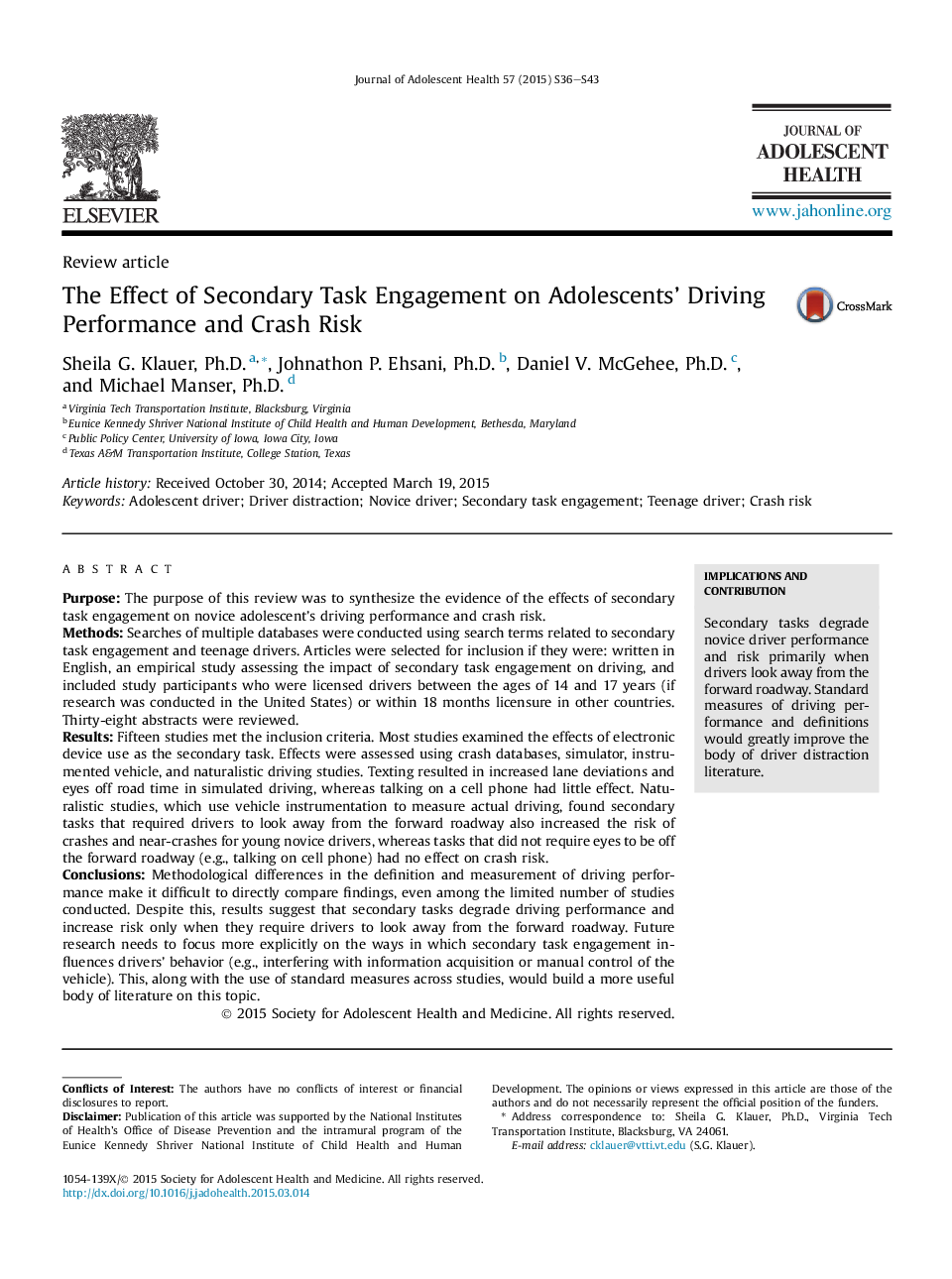| کد مقاله | کد نشریه | سال انتشار | مقاله انگلیسی | نسخه تمام متن |
|---|---|---|---|---|
| 1077956 | 950403 | 2015 | 8 صفحه PDF | دانلود رایگان |
PurposeThe purpose of this review was to synthesize the evidence of the effects of secondary task engagement on novice adolescent's driving performance and crash risk.MethodsSearches of multiple databases were conducted using search terms related to secondary task engagement and teenage drivers. Articles were selected for inclusion if they were: written in English, an empirical study assessing the impact of secondary task engagement on driving, and included study participants who were licensed drivers between the ages of 14 and 17 years (if research was conducted in the United States) or within 18 months licensure in other countries. Thirty-eight abstracts were reviewed.ResultsFifteen studies met the inclusion criteria. Most studies examined the effects of electronic device use as the secondary task. Effects were assessed using crash databases, simulator, instrumented vehicle, and naturalistic driving studies. Texting resulted in increased lane deviations and eyes off road time in simulated driving, whereas talking on a cell phone had little effect. Naturalistic studies, which use vehicle instrumentation to measure actual driving, found secondary tasks that required drivers to look away from the forward roadway also increased the risk of crashes and near-crashes for young novice drivers, whereas tasks that did not require eyes to be off the forward roadway (e.g., talking on cell phone) had no effect on crash risk.ConclusionsMethodological differences in the definition and measurement of driving performance make it difficult to directly compare findings, even among the limited number of studies conducted. Despite this, results suggest that secondary tasks degrade driving performance and increase risk only when they require drivers to look away from the forward roadway. Future research needs to focus more explicitly on the ways in which secondary task engagement influences drivers' behavior (e.g., interfering with information acquisition or manual control of the vehicle). This, along with the use of standard measures across studies, would build a more useful body of literature on this topic.
Journal: Journal of Adolescent Health - Volume 57, Issue 1, Supplement, July 2015, Pages S36–S43
